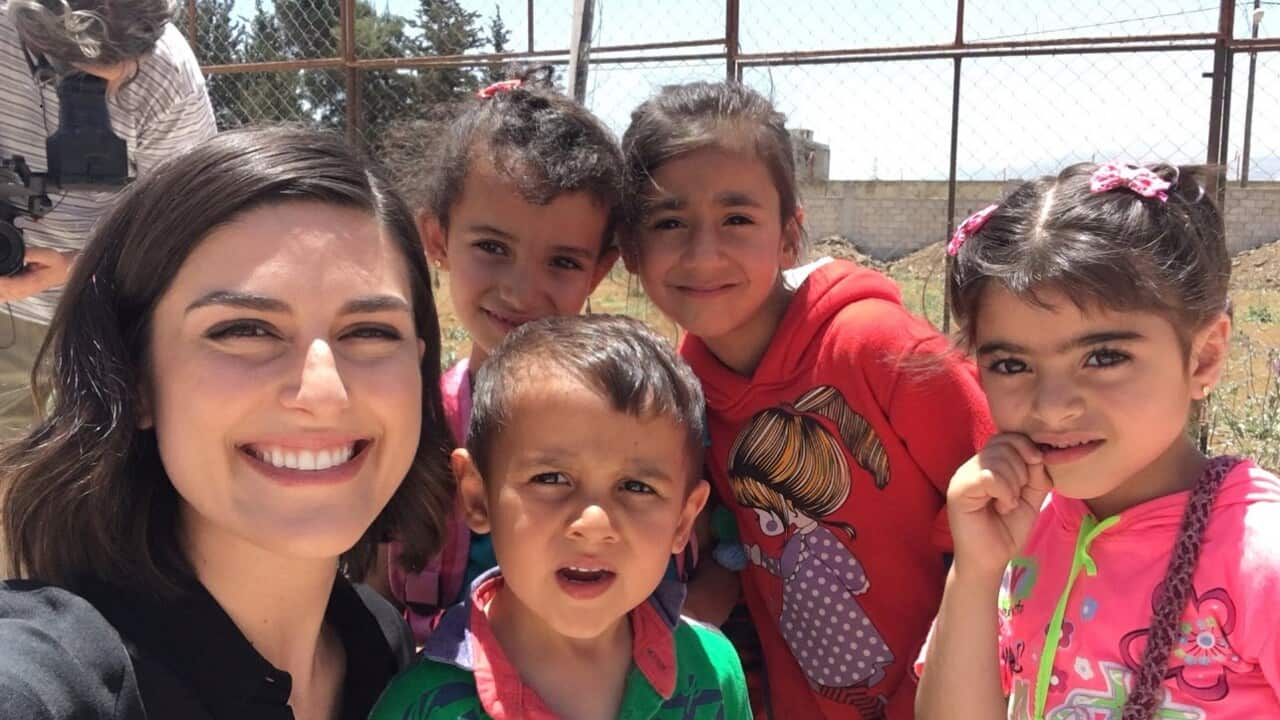Syria’s humanitarian crisis is the . Over the country’s seven-year civil war, almost half the population has fled: 6.6 million city dwellers have moved to the countryside and 4.9 million citizens have crossed borders, mainly .
Nearby Lebanon is the primary destination. Since 2011 this small, religiously diverse country of 4.5 million people has officially welcomed over (and likely many more unregistered Syrians).
The massive influx into Lebanon has the country’s health and education systems. Proportionally, it’s as if France had received 15 million or the United States 80 million (these countries actually committed to take in, respectively, in 2017).
Migration also threatens to upend the country’s delicate balancing act of religion and politics. Just over half of Lebanon’s population , while Christian denominations . These communities have lived in peace .
A Lebanese renaissance?
In , we examined how the Syrian arrivals, who are largely Sunni Muslim, might impact Lebanon’s political future.
Projecting forward to the year 2030, we envisioned contrasting futures for a changing Lebanon: one of them positive (we called it Phoenixia) and two somewhat darker (Sarajevo Beach and Boot Camp).
Phoenixia assumes that the refugee flow will slow (as ) and that Lebanon’s strong central power remains dominant. In this scenario, the country is progressively secularised and developed under the impetus of international donors, who condition their financial assistance on a greater integration of Syrian refugees.
We consider this the most desirable direction for a changing Lebanon but, in truth, the appeal of each scenario varies from stakeholder to stakeholder. And in Lebanon, there are many.
Political power in the country is distributed among its according to the 1943 , a non-written agreement traditionally recognised as the country’s constitutive charter. It allocates political and administrative posts according to the demographic breakdown defined in the , among other criteria.
To goes the powerful and command of the army. Sunni Muslims get the presidency of the council of ministers, while the Shiites control the presidency of the parliament and the Greek Orthodox its vice-presidency.
Despite changes in the population over the past 80 years (due, in particular, to higher fertility among Muslim groups), not to conduct a new census.
This safeguards the National Pact, but the situation is arguably fragile. Integrating hundreds of thousands of Sunni Syrians (not to mention already there), could debunk the myth of a sustained religious balance.
Phoenixia holds that secularisation is the key to neutralising the threat of religious upheaval. If the religious identity of Syria’s refugees were not at issue, they would not pose a political problem (although caring for and accommodating the new arrivals would still present a social and economic challenge).
Increased tensions
But it is not that simple. Lebanese politicians derive their mandates from the country’s community-based social organisations, which also have exclusive jurisdiction over , such as marriage, ancestral lineage and inheritance.
These organisations will inevitably oppose – probably successfully – ending the current system.
The Sarajevo Beach scenario is the opposite of Phoenixia. Its central hypothesis is that the number of refugees increases, overpowering a weakened central government. This would lead to a sharp deterioration of Lebanon’s socioeconomic conditions, and both migrants and natives could face shortages of water, electricity and housing.
Such a scenario would exacerbate existing tensions in regions such as , where an .
The refugees would thus migrate to Sunni Muslim areas in northern Lebanon. But far from solving the country’s socioeconomic problems, the mass migration could amplify them in these Sunni zones.
This would delight local warlords. (1975-1990), militias have routinely drawn their troops from the most fragile segments of society. An influx of potential recruits may encourage some parties to seek out confrontation between Sunni and Shia.
To prevent this conflict from spurring a new exodus of refugees to Europe and the Gulf, Sarajevo Beach envisages that the international community would find itself compelled to intervene, converting Lebanon into a .
For our last scenario, Boot Camp, we queried what would happen if Lebanon’s current migratory situation continues unchanged. We assumed that business would proceed as usual – the number of refugees would decline, and the country’s fragile central power remains little inclined to act.
Over time, inertia would cause Lebanon’s situation to deteriorate profoundly. We determined that it would enter into economic recession, multiplying crime and violence and creating a security crisis. All of this would compound the political crisis now brewing as Sunni Muslims flood into a system that favours Christians.
To avoid chaos, the Boot Camp scenario has Lebanon’s economic elites support a military coup. This route would preserve the country and save their personal affairs, and the international community – more concerned with stability than democracy – would assist the elite-backed military in addressing the situation.
What does it mean?
As these scenarios show, Lebanon’s main problem is not actually the new refugees per se but rather the pressure they put on the country’s dysfunctional and obsolete power-sharing system.
Not only does it incentivise leveraging the new population to serve specific political agendas, but, as we came to realise in outlining these scenarios, the is a myth.
They are not capable of dealing with all manner of crises. Far from it: no matter what future we imagine for Lebanon, the current political system shatters – for different reasons.
Today, international donors are providing the country with just enough to hold on, .
Lebanon’s situation should concern the world. If this peaceful Middle Eastern country collapses, a new wave of refugees – both Syrian and Lebanese – would head into neighbouring Turkey and Greece, then onward into Europe.










